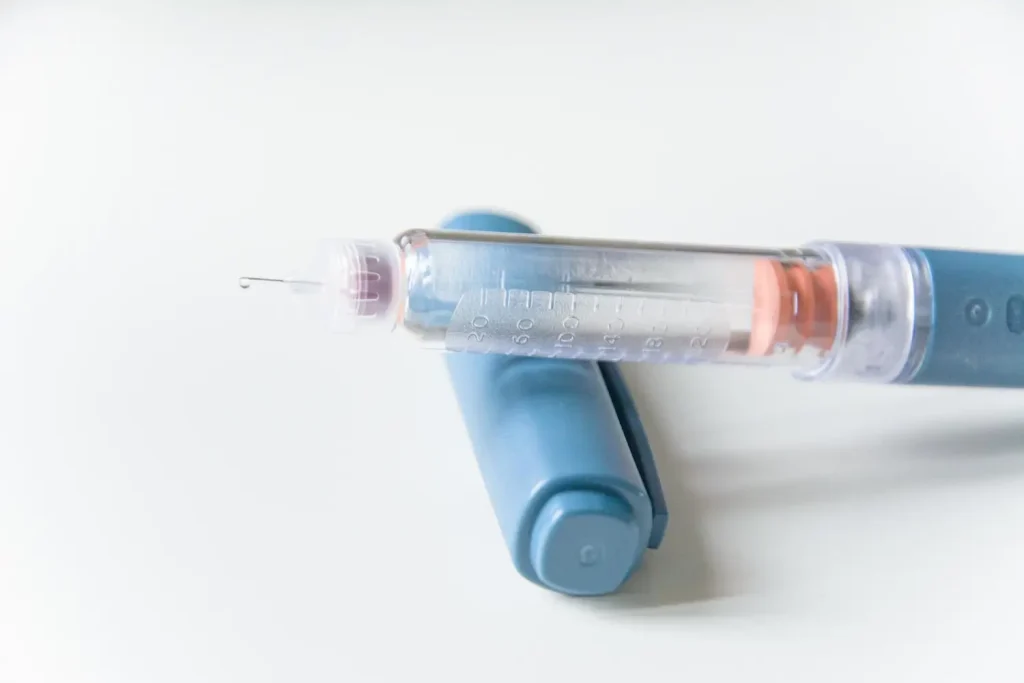Recent clinical research published in BMC Medicine highlights a crucial aspect of non-invasive medical interventions—adhering to precise dosing and scheduling protocols. The study demonstrated that sticking to these protocols can enhance therapeutic outcomes by up to 25%, emphasizing the significance of careful treatment planning.
This principle holds true for Actemra, a medication that requires a fine-tuned approach to dosing and infusion scheduling. When administered correctly, Actemra can deliver optimal results while minimizing risks, making precision key to its effectiveness.
In this article, we’ll dive into Actemra’s specific dosing guidelines and infusion schedules, exploring best practices to ensure the treatment is delivered safely and effectively, ultimately maximizing patient outcomes.
Key Takeaways
- Actemra treatment must be tailored to the individual, considering factors like patient weight, condition severity, and response to therapy to ensure optimal outcomes.
- Ongoing assessments are crucial to adjust dosing and ensure patient safety. Monitoring includes complete blood counts, liver enzymes, and lipid profiles to detect any early signs of complications.
- Switching between IV to SC injections can be done without requiring an additional loading dose, streamlining treatment while maintaining consistent therapeutic levels.
- The dosing schedule may need to be modified based on clinical response and laboratory markers, which helps to minimize risks and enhance treatment effectiveness.
- Regular evaluations help prevent adverse reactions and allow for timely intervention if needed, ensuring patients stay on track with their treatment plan.
- The key to successful Actemra therapy lies in individualized care, ensuring each patient receives the most effective dosing schedule for their specific health needs.
About: Medica Depot is your trusted all-in-one supplier, offering a range of high-quality medical injectables and supplies. Order Actemra online at Medica Depot today! Whether for health professionals, plastic surgeons, dermatologists, licensed estheticians, or other specialists, we can offer genuine, brand-name products you may need. With Medica Depot, we prioritize serving you better to improve the patient’s quality of life.
Dosing Regimens for Actemra by Indication

Actemra (tocilizumab) is a highly effective treatment for various inflammatory conditions, but adhering to its label, the Actemra prescribing information helps ensure optimal results and patient safety. The treatment’s recommended dosage and administration protocols are carefully calibrated by the US Food and Drug Administration (FDA) to align with the needs of each condition. These specific dosing schedules are critical to maximizing Actemra’s effectiveness.
The dosing varies based on the route of delivery—intravenous infusion or subcutaneous injection—and the specific condition under treatment.
Below are the recommended dosing regimens for different conditions:
Rheumatoid Arthritis (RA)
- Actemra IV: Start with a recommended intravenous dose of 4 mg/kg every four weeks. A doctor may increase the dose to 8 mg/kg for optimal treatment outcomes.
- Actemra SC: A fixed subcutaneous injection of 162 mg every other week for patients weighing <100 kg. On the other hand, for ≥100 kg, a healthcare provider should give 162 mg every week.
Giant Cell Arteritis (GCA)
- Actemra Intravenous Infusion: IV infusion needs 6 mg/kg and steroid tapering every four weeks.
- Actemra Subcutaneous Administration: The recommended subcutaneous dose of 162 mg every week or every other week, also with steroid tapering.
Systemic Sclerosis-Associated Interstitial Lung Disease (SSc-ILD)
- This condition only allows subcutaneous SC injection of a 162 mg dose in a once a week schedule.
Polyarticular Juvenile Idiopathic Arthritis (PJIA)
- The IV infusion schedule should be every four weeks. Patients weighing more than 30kg need an 8 mg/kg dose, while those weighing less than 30kg require a 10 mg/kg dose.
- SC injection must be at a 162 mg dose with a schedule every two or three weeks.
Systemic Juvenile Idiopathic Arthritis (SJIA)
- This requires an IV schedule every two weeks, with patients weighing more than 30kg needing an 8 mg/kg dose and those weighing less than 30kg requiring a 12 mg/kg dose.
- Its SC injection dose is 162 mg, requiring administration once every week or once every two weeks.
Cytokine Release Syndrome (CRS)
- The IV infusion dosage for patients weighing more than 30kg is 8 mg/kg, while those weighing less than 30kg should receive 12 mg/kg.
Coronavirus Disease 2019 (COVID-19)
- Actemra IV for COVID-19 recommends a dosage of 8 mg/kg through a 60-minute infusion.
Adjusting Actemra Doses Based on Patient Factors

To optimize the therapeutic effects, Actemra dosing must be adjusted according to patient-specific factors such as weight, liver function, and other medications. By considering these individual factors, a healthcare provider can ensure a safe and effective treatment process.
- Weight Based Considerations: The weight of the patient significantly influences dosing. Actemra is tailored for both IV and SC administration based on weight to ensure the patient receives the correct amount of medication for optimal treatment.
- Liver Function: Actemra should be administered cautiously in patients with abnormal liver enzyme levels. If ALT or AST levels exceed 1.5 times the upper limit of normal, clinicians may need to reduce the dose or temporarily pause treatment to prevent hepatotoxicity.
- Concomitant Medication Considerations: Combining Actemra with other immunomodulators increases the risk of infection. Physicians may need to adjust the dosing schedule to minimize these risks while ensuring the treatment’s efficacy.
Guidelines for Dose Escalation and Reduction
Adjusting the dose of Actemra based on patient response is crucial for achieving optimal results. If laboratory tests show acceptable limits and the patient’s clinical response remains suboptimal, a doctor may increase the dose. Conversely, if they detect concerning lab results, such as elevated liver enzymes or reduced neutrophil counts, they may reduce the dose or temporarily discontinue treatment.
Monitoring and Managing Actemra Therapy

To ensure the safety and effectiveness of Actemra, it’s essential to regularly monitor patients during treatment. Regular clinical evaluations and laboratory testing help assess patient progress and detect potential side effects early.
Key Monitoring Tests
- Complete blood count
- Liver enzyme panels (ALT, AST)
- Lipid profiles
In addition to lab tests, clinicians should be on the lookout for signs of infection or gastrointestinal distress. Providers and patients must actively communicate to promptly address any adverse reactions.
Intravenous Infusion and Subcutaneous Injection: Transitioning Between Actemra Administration Routes
Clinicians can transition patients from Actemra IV to Actemra SC without requiring an additional loading dose. The first SC injection replaces the next scheduled IV infusion, maintaining consistent therapeutic levels as confirmed by clinical trials. This streamlined approach simplifies treatment while preserving drug efficacy and patient safety.
During the transition, regular patient monitoring ensures a smooth and effective switch. Healthcare providers assess clinical parameters and laboratory markers before making the change. Additionally, patients transitioning to home-based SC dosing receive proper information and training on self-injection techniques, reinforcing treatment adherence and confidence in administration.
Conclusion
The dosing of Actemra is not one-size-fits-all; it is essential to tailor the administration to meet individual patient needs. With variations depending on conditions, healthcare providers must consider factors such as patient weight and response to therapy. This personalized approach ensures patients receive the most effective treatment aligned with their health requirements.
Moreover, continuous assessment and adjustment of Actemra therapy are vital for optimizing patient outcomes. Regular monitoring allows for timely modifications in dosing, enhancing the overall effectiveness of the treatment while minimizing potential risks. By prioritizing individualized care, physicians can improve patient satisfaction and therapeutic success.
FAQs
1. What is the starting dose of Actemra for rheumatoid arthritis?
For rheumatoid arthritis, clinicians typically start Actemra at 4 mg/kg administered intravenously every four weeks and adjust the dose based on the patient’s specific needs.
2. How should practitioners monitor patients during Actemra therapy?
Proper monitoring during Actemra therapy involves regular assessments of the patient’s response to treatment, liver function tests, and checking for any potential side effects. According to the label information, frequent follow-ups help ensure that dosing remains appropriate and effective.
3. Why must clinicians individualize dosing for Actemra therapy?
Individualized dosing is crucial because it allows adjustments based on patient weight, liver function, and clinical response. This tailoring helps maximize the treatment’s benefits while minimizing potential risks for patients taking Actemra.
References
- Shi Y, Wu W. Multimodal non-invasive non-pharmacological therapies for chronic pain: mechanisms and progress. BMC Medicine. 2023;21(1). doi:10.1186/s12916-023-03076-2
- Genentech. ACTEMRA RA and GCA IV Administration video. Actemra. https://www.actemrahcp.com/ra/dosing-and-monitoring/dosing-schedule.html









